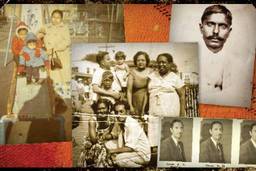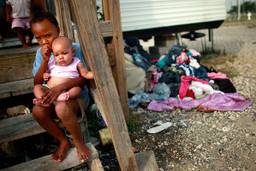The neighborhood where my cousins raised their children still looks like a ghost town, and everyone I know can count on their fingers two handfuls of people they know who have died since Katrina. But during this second Mardi Gras since the storm, the survivors are visible and they are holding on to their culture with the tenacity of pit bulls, with (and mostly without) government assistance.
Pontchartrain Park, Gentilly and the 7th Ward are not the most devastated areas of New Orleans. (The Industrial Canal did not rush through their homes on the day after the hurricane with the force of a tsunami.) But they are areas that took anywhere from two feet to more than 10 feet of water. And still, some people are coming back here, determined to regain some semblance of the lives they lived earlier.
They are, in small ways, reconnecting. They linger for conversation in the home improvement and grocery stores. They strike up talk with strangers, quickly as they always did, but with more passion. White-haired women stand at the checkouts and discuss the challenges of carrying packages, which at an earlier time might have been handled by a relative or a neighbor.
People meet in church, where all the waterlogged pews have been replaced by folding chairs. They stretch for about thirty rows back and ten across at Corpus Christi on the Sunday before Mardi Gras. At least half of the chairs are filled, and some people stand to testify and clap along when the choir sings “Who came to my rescue? Nobody but you Lord.” Even the priest mentions his plumber in a sermon called “Love thy Enemies.” Everyone knows he’s only half-joking.
People have come back to the streets, dark without their usual lit porches and bright front rooms where families spent evenings together. They have applied to the government programs like Road Home, but are stalled by the need for documentation and confounded by regulations that ask them to raise their houses to flood safe levels – houses that were built on cement slabs. Whether the costs outweigh the benefits remains a big question.
So many houses from the outside still bear the Xs of inspectors looking for the drowned and those overcome by one of the any number of now-familiar ways to die in smoldering heat. We note these houses on a drive through the neighborhood as the places where people we know used to live and occasionally died. We mark them with the same deep resonance and mixed feelings as we remembered the past of the restaurants that re-opened after Civil Rights, as places that only served whites.
The racial war still permeates all of New Orleans like the morning fog. There is a dank and latent distrust with predictable collisions. Murders that could have been avoided by more careful upbringing, and more fair education and economic opportunities, occur frequently. Victims are plenty. But none of this has stopped anyone from driving home.
At the carnival ball, the simple one that I went to with a friend where everyone brings food to share, we see costumes brought out of the closets that survived, or bought secondhand from the thrift store. There are homemade pharaohs and floozies, a nearly 70-year-old pimp with a clock around his neck and a youthful Marie Antoinette with a white powdered wig.
People are reunited momentarily to dance with friends who had to move out of town. They enjoy the company of their children, who have been sacrificed to other cities, and better schools. On Sunday, there is a party of a group of women who march in a carnival club called the Walking Warriors.
We are all walking warriors now, a friend of mine commented.
Hammering warriors, red-tape-fighting warriors, mouse-catching and sanity-maintaining warriors abound.
People crowd the parades in uncharacteristically cold weather, eight- to ten- deep in some places. Families and friends have come home to at least set up picnic tables on the neutral grounds and watch floats glide by. Everyone is swept up in the mesmerizing glitter, as ancient and primitive as staring into a campfire.
This may be our only source of heat for a long time.







